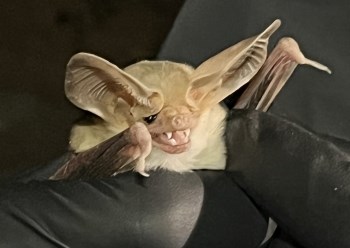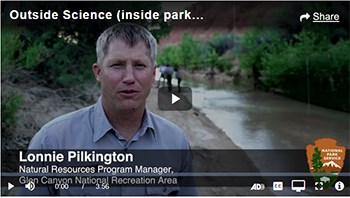
NPS / GRACE CARPENTER 
NPS / Taryn Preston Glen Canyon Bat Inventory & Monitoring
Because of concerns during the Covid 19 pandemic, monitoring stopped for several years but began again in 2022. Park staff working with Bat Conservation International (BCI), resumed WNS testing and acoustic surveys. BCI is currently developing a bat monitoring plan for the park. WNS has not been detected in any bats within Glen Canyon National Recreation Area. 
NPS / Taryn Preston Bats of Glen Canyon National Recreation Area17 species are known to occur within the park.

Outside Science (inside parks) videoIn this episode of Outside Science (inside parks), spend time with interns, volunteers, and staff at Glen Canyon National Recreation Area to see how and why they study bats. Learn MoreBats in National Parks |
Last updated: October 17, 2023
